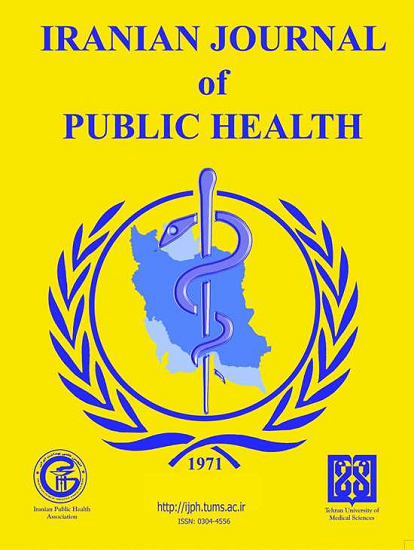Predictive Value of Infection Related Critical Illness Scores on the Risk of Death in Infected Patients: A Systematic Review and Meta-Analysis
Abstract
Background: This article aimed to compare the value of infection related critical illness scores in predicting the risk of death in infected patients, and evaluate the predictive accuracy of three scoring indicators: SOFA score, APACHE II score, and NEWS score.
Methods: Through the established retrieval strategy, the relevant literature from January 2013 to December 2023 were searched on platforms such as CNKI, Wanfang, PubMed, Embase, and Cochrane Library, eight relevant literature were included for meta-analysis. Literature screening and data extraction were conducted according to predetermined standards, using a fixed effects model for data analysis.
Results: Among the 8 included literature (References (5-12)), the ratio of mortality to survival and 95% confidence interval for SOFA scores were 1.33 and (0.98, 1.75), respectively; The APACHE II score is 2.24 and (1.58, 2.97); The NEWS score is 1.64 and (1.45, 1.85). All three scoring indicators had significant value in predicting the risk of death in infected patients. In addition, comparing the AUC of the three scoring indicators, the SOFA score had the highest AUC, followed by the APACHE II score, and showed significant differences compared to the NEWS score, with P<0.001 and P<0.05 respectively.
Conclusion: The SOFA score has higher accuracy and predictive value in predicting the condition and risk of death of infected patients. However, further attention needs to be paid to the selection of scoring methods to comprehensively consider the clinical situation and research objectives. The results of this study are helpful in guiding the evaluation and prediction of infected patients in clinical practice, and providing a basis for optimizing treatment strategies.
2. Yankova E, Aspris D, Tzelepis K (2021). The N6-methyladenosine RNA modifi-cation in acute myeloid leukemia. Curr Opin Hematol, 28(2):80–85.
3. Cho HW, Hong JH, Lee JK (2021). Detec-tion of high-risk human papillomavirus infection and treatment of high-grade vaginal intraepithelial neoplasia: A sin-gle-institution study. Int J Gynaecol Obstet, 154(2): 227–232.
4. Chen X T, Zhang Q, Zhou C Q, et al (2021). Anticoagulant treatment for pul-monary embolism in patient with cere-bral hemorrhage secondary to mechan-ical thrombectomy: A case report. World J Clin Cases, 9(33): 10279-10285.
5. Wang XT, He JX (2021). Distribution of pathogenic bacteria and risk factors of nosocomial infection after laparoscopic radical gastrectomy. World Chin J Di-gestology, 29(2):93-98.
6. Stark A, Cantrell S, Greenberg R, et al (2021). Long-term Outcomes after Post-natal Cytomegalovirus Infection in Low Birthweight Preterm Infants: A Systemat-ic Review. Pediatr Inf Dis J, 40(6):571-581.
7. Keneally RJ, Chow JH, Pla RA, et al (2022). Racial disparities in catheter related uri-nary tract infections among elderly trauma patients in the US. Am J Infect Control, 50(1):77-80.
8. Calderon R I, María B. Arriaga, Aliaga JG, et al (2022). Persistent dysglycemia is as-sociated with unfavorable treatment outcomes in patients with pulmonary tuberculosis from Peru(J). Int J Infecti Dis, 116:293-301.
9. Sader HS, Carvalhaes CG, Mendes RE (2021). Ceftaroline activity against Staphylococcus aureus isolated from pa-tients with infective endocarditis, worldwide (2010-2019). Int J Infect Dis, 102:524-528.
10. Liu KS, Tong YS, Lee MT, et al (2021). Risk Factors of 30-Day All-Cause Mortality in Patients with Carbapenem-Resistant Klebsiella pneumoniae Bloodstream In-fection. J Pers Med, 11(7):616.
11. Julienne J, Douillet D, Mozziconacci MS, et al (2023). Prognostic accuracy of using lactate in addition to the quick Sequen-tial Organ Failure Assessment score and the National Early Warning Score for emergency department patients with suspected infection. Emerg Med J, 40(1):28-35.
12. Macnicoll F, Tung MS, Mcgowan B (2021). Using quality improvement to standard-ise and enhance the use of the national early warning score (NEWS) in an old age psychiatry inpatient setting. BJPsych Open, 7(Suppl 1):S38–S39.
13. Kavitha R, Mayi K (2021). A prospective comparative study of Apache ii and Apache iv in mortality prediction in ICU. Indian J Appl Res,11(1):38-39.
14. Lan L, Zhou M, Chen X, et al (2024). Prog-nostic accuracy of SOFA, MEWS, and SIRS criteria in predicting the mortality rate of patients with sepsis: A meta‐analysis. Nurs Crit Care, 29(6): 1623-1635.
15. Euden J, Thomas-Jones E, Aston S, et al (2022). PRO calcitonin and NEWS2 evaluation for Timely identification of sepsis and Optimal use of antibiotics in the emergency department (PRONTO): protocol for a multicentre, open-label, randomised controlled trial. BMJ Open, 12(6): e063424.
16. Taslidere B, Sonmez E, Aye Büra zcan, et al (2021). Comparison of the quick SO-FA score with Glasgow-Blatchford and Rockall scores in predicting severity in patients with upper gastrointestinal bleeding. Am J Emerg Med, 45: 29–36.
17. Qian F, Sherrod CF, Hsiung JC, et al (2021). Predicting in-hospital cardiac arrest in patients with sepsis using a machine learning algorithm: a national cohort study. J Am Coll Cardiol, 77(18):1500.
18. Fan Y, Chen L, Jiang S, et al (2022). Timely renal replacement therapy linked to bet-ter outcome in patients with sepsis-associated acute kidney injury. J Intensive Med, 2(3):173-182.
19. Gomez S R, Lam E, Mosquera LG, et al (2021). Fr402 meld-na score versus sofa score and Apache ii score as early pre-dictors of mortality in covid-19 patients with liver involvement. Gastroenterology, 160(6):S-312–S-313
20. Harwood R, Yan H, Da Camara NT, et al (2022). Which children and young peo-ple are at higher risk of severe disease and death after hospitalisation with SARS-CoV-2 infection in children and young people: A systematic review and individual patient meta-analysis. EClini-calMedicine, 44:101287.
21. Xie Y, Choi T, Al-Aly Z (2023). Risk of death in patients hospitalized for COVID-19 vs seasonal influenza in fall-winter 2022-2023. JAMA, 329(19): 1697-1699.
| Files | ||
| Issue | Vol 54 No 6 (2025) | |
| Section | Review Article(s) | |
| DOI | https://doi.org/10.18502/ijph.v54i6.18892 | |
| Keywords | ||
| Infection Death Risk prediction Critical illness score Meta-analysis | ||
| Rights and permissions | |

|
This work is licensed under a Creative Commons Attribution-NonCommercial 4.0 International License. |





